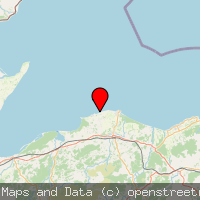Sculptor’s Cave
Excavation
S. Benton, 1928-1930; I.A.G. Shepherd & A.N. Shepherd, 1979.
Curation
National Museum of Scotland
Burials
MNI: 1+ (including juveniles).
Finds
Late Bronze Age, Roman Iron Age and Pictish metalwork, Bronze Age and Roman pottery, bone implements, animal bone.
Dates
| Period | Reliability |
|---|---|
| Roman | 14C date obtained directly on human remains |
14C
1738 bp (UB-6930) 1696 bp (SUERC-68717) on human bone
External References
Bibliography
Allen, J.R. & Anderson, J. (1903) The Early Christian Monuments of Scotland. Edinburgh.
Armit, I. & Buster, L. (2020) Darkness Visible. The Sculptor’s Cave, Covesea, from the Bronze Age to the Picts. Society of Antiquaries of Scotland.
Armit, I., Schulting, R.J., Knüsel, C. J. & Shepherd, I.A.G. (2011) Death, decapitation and display: the Bronze and Iron Age human remains from the Sculptor’s Cave, Covesea, NE Scotland. Proceedings of the Prehistoric Society 77: 251-78.
Benton, S. (1931) The excavation of the Sculptor’s Cave, Covesea, Morayshire. Proceedings of the Society of Antiquaries of Scotland 65: 177-216.
Oldham, A.D. (1975) The Caves of Scotland. Privately printed.
Robertson, A.S. (1970) Roman finds from non-Roman sites in Scotland. Britannia 1: 198-226.
Sheridan, A. et al. (2019) A summary round-up list of Scottish archaeological human remains that have been sampled/analysed for DNA as of January 2019. Discovery and Excavation in Scotland 19: 227-250.
Shepherd, I.A.G. (1983) Pictish settlement problems in N.E. Scotland. In Chapman, J.C. and Mytum, H.C. (eds) Settlement in Northern Britain 1000 BC - AD 1000. British Archaeological Reports, British Series 118. B.A.R., Oxford, pp. 327-356.
Shepherd, I. & Shepherd, A. (1979). Sculptor’s Cave, Covesea (Drainie). Discovery and Excavation in Scotland 14-15.
Article Author Graham Mullan

